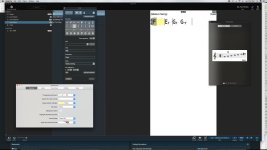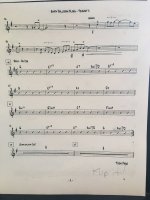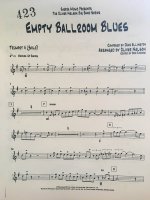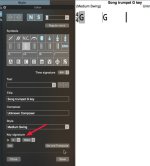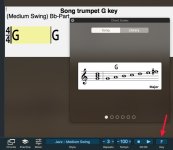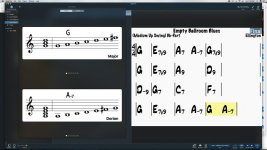... even something as simple as inserting bar lines seems confusing (do I use my mouse to click where I want the bar line? space bar? tab?)
Because you are doing video editing and presumably used to key commands, you will probably find it easier to insert (left single) barlines with the key command (cmd-B) but you can click on the barline buttons if you prefer (all the different barlines have a key command; you will find these in Edit>Insert>Barline). The left one will be inserted at the left of the space the cursor is in. You can either click to a space where you want to add the next barline and/or chord or use the Return key to move along. Unless I am putting a double barline at the end of a system (line) I usually continue with the Return key at the end of a system, then insert a left barline at the new line below which automatically inserts one at the end of the previous line for you (meaning you do not need to insert a right barline at the end of a system for single barlines).
Another challenge as I've mentioned, is that it frequently barks at me because I don't construct the measures properly and I don't exactly understand where the chord goes in the measure (I assume right at the beginning) and then how many spaces (if any) go between it and other chord in the same measure.
Normally we put the chord symbol where the left barline is (as you probably have noticed in the Exercise songs that were in the app when you purchased it). This is where the chord starts and where the beat starts when playing the measure and makes sense if there is two chords in a measure. (If in 4/4 time, the second chord would occupy the 3rd space where it is played for beat 3 and 4). (However the player will assume you mean a single chord to start at the first beat of the measure if you have it placed in the middle instead.)
The measure does not necessarily have to have 4 spaces per measure, but doing it this way means there are 4 bars across the page (4 bars per system), and this works for songs in 4/4, 3/4 and 5/4 etc. As you might know, quite often, songs are in 8 bar or 16 bar sections and so this makes it tidy with each section starting on a new line. (For long songs, some use the New song 96 bar template which squeezes the song into one page, but you can only have 2 chords per measure. Actually you can mix-and-match the spaces in each bar if you need to (or don't have time to tidy up the song before you need to practice) as it looks for barlines (not necessarily its width) (although sometimes the placement of multiple chords within can cause a problem). If you have a measure (bar) without any chords in it, it will be ignored, which is why your song still should play correctly (from the example you show) where it plays the measure with the chord in for 4 beats and continues on to the next, skipping blank measures (a measure defined as between two barlines).
We have a couple of helpful references here which might now make a little more sense to you:
https://forums.irealpro.com/threads/iReal-Pro-layout-conventions.194/
https://forums.irealpro.com/threads/GLOSSARY-iReal-Pro.188/
Also within the app, Help.
To input a simple chord progression like F, Bb7, C7, F where there is one chord per measure, you would simply type:
f return (4 times) cmd-b b b 7 return (4 times) cmd-b c 7 return (4 times) f return (4 times)
where return (4 times) means pressing the Return key four times (to input the chord then) move the cursor along (although you could just as well click to the next place you want to insert the barline and chord).
Then end with a double bar, click on the right double bar or (right) final bar button (or their equivalent key command).
... the language of jazz chords is subject to lots of inconsistencies.
Unfortunately jazz chords were not completely standardized (no international body to formulate the rules) so there are variations of the same thing. You will be able to find 'conversion' charts grouping the equivalent chord symbols together. Some musicians prefer using abbrevations rather than symbols, for example writing 'aug' for augmented but others prefer + or # because these take up less room and quicker to write or type (however if handwritten or in less than ideal lighting circumstances, could be mistaken for some other symbol or missed altogether). There is limited space in iReal Pro so we have had to mostly use symbols rather than abbreviations.
The new notation software,
Dorico, currently offers six options to choose from to format your chord symbols (depending on how the composer or engraver wants the chord symbols to appear) according to each of the specified conventions (for example, Brandt-Roemer, Indiana, Jazz Standard)—some are more symbol based, others with abbreviations (being presumably more understandable for some), some with parentheses and others, without (and then options to override or develop your own).
You become accustomed to different symbols over time and don't think much about it. iReal Pro provides the menu options of the chord qualities which the player understands. You can get used to how to type them in (especially the common ones) and using the Return key and key commands, the process to input a song can become quite fast.
I also don't really understand how to insert the end bar. Again, do I tab, or just click my mouse ahead a bit, or space bar? iRP sometimes tells me that it can't understand my measures. I don't recall the exact language.
You can insert an end barline after you have input your final chord, which would either be the right double barline or final barline, although if you are preferring 4 spaces per measure, you might like to move the cursor along with the Return key (or click) a few spaces ahead before adding this right barline.
If you adhere to 4 spaces per measure, the first chord is at the beginning of the bar and the chord qualities (the bit after the letter name of the chord) are from the menu, there should not be any errors on pressing Play. Remember empty measures are ignored and it will accept less than 4 spaces per measure as outlined above. However if an error is found in a measure, it will tell you which one (you have to count along to find it) and should tell you what is wrong, for example it does not know the chord you have entered or too many chords in the measure, or it cannot work out where to start playing a chord mid-measure because of its placement within the measure.
It looks like you have made good progress with what you have done. You might like to edit (or duplicate and edit) it according to the conventions we use for formatting a song.
Let us know how you are progressing, thanks!

